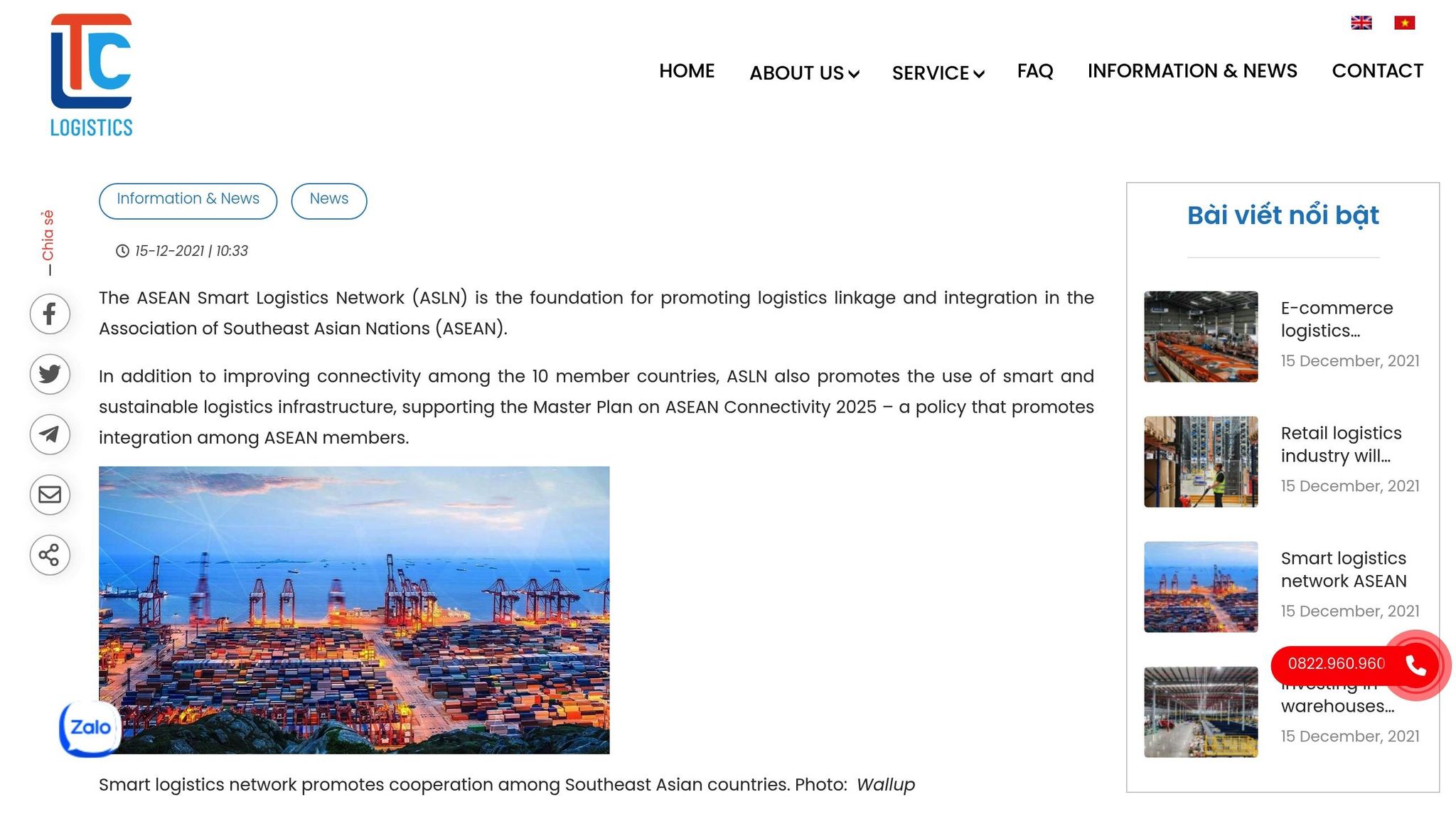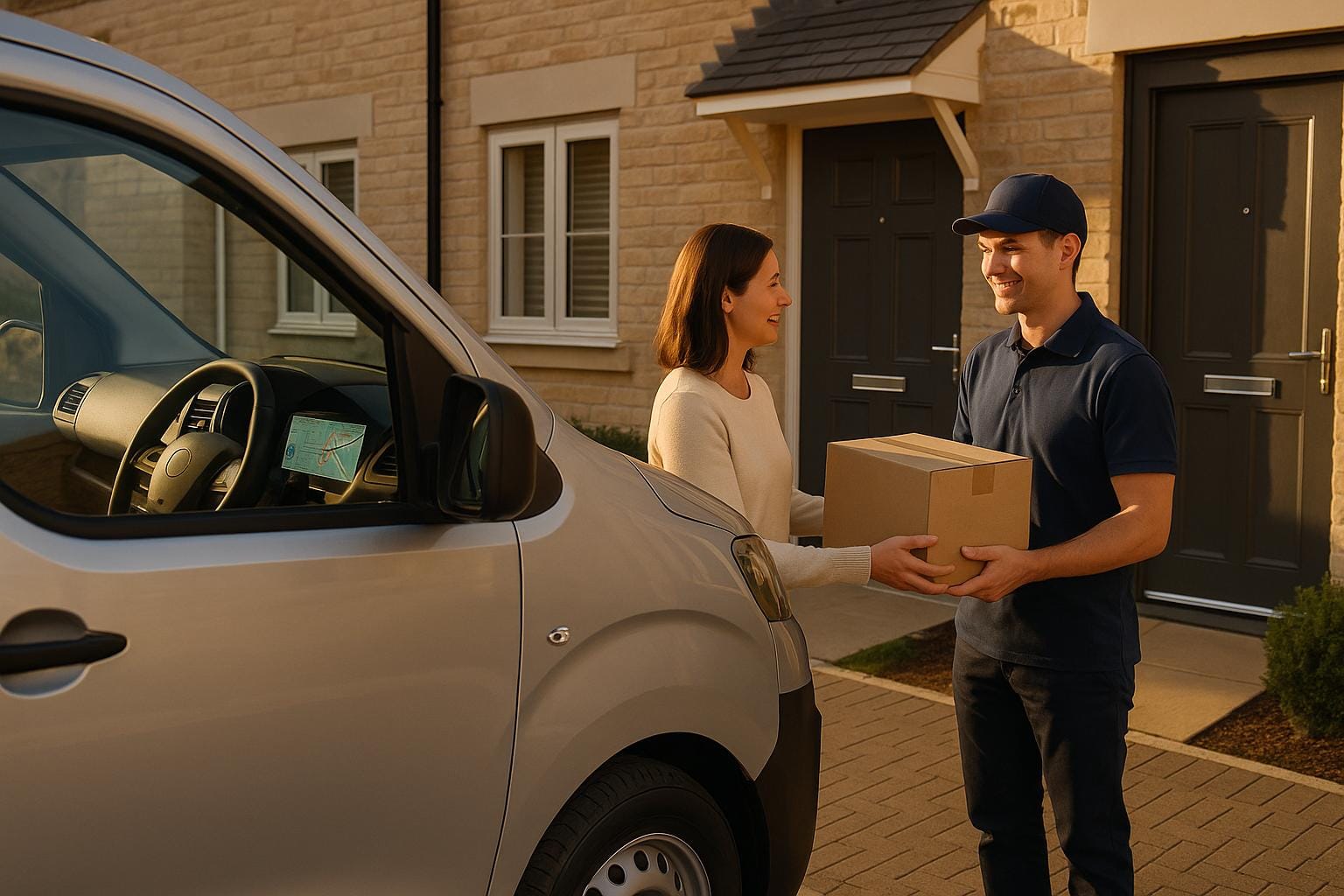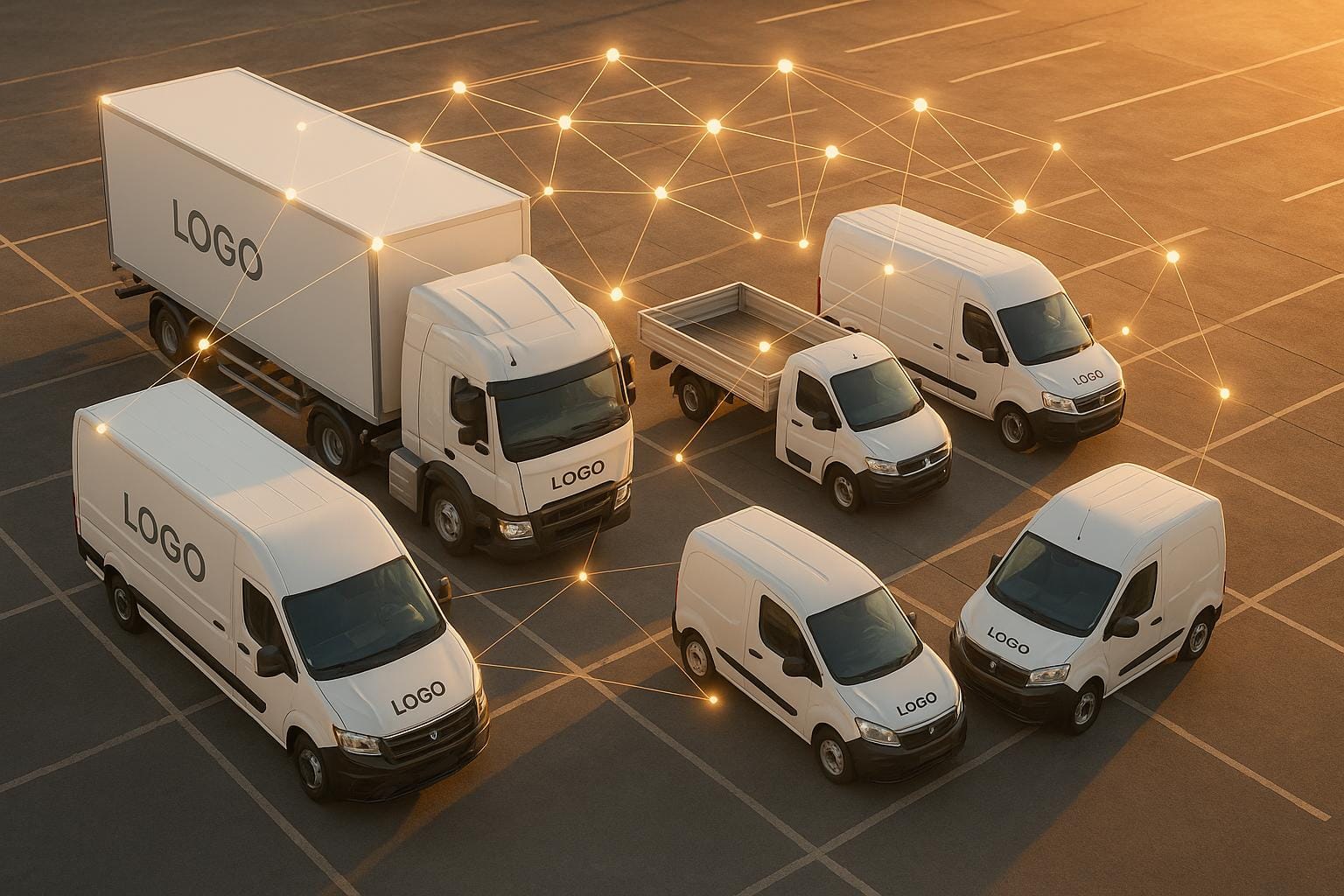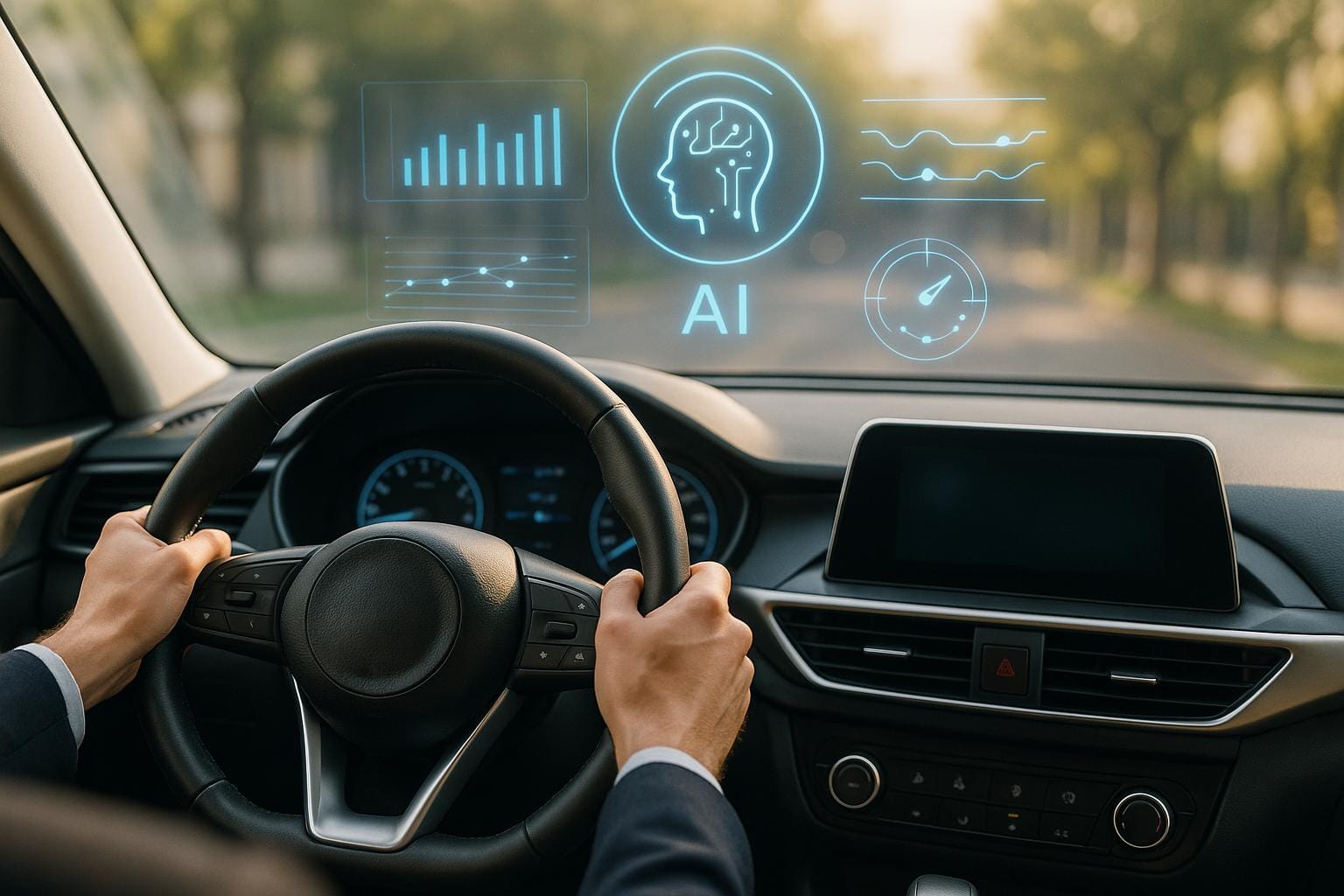Telematics is transforming UK delivery services by improving efficiency and customer satisfaction. This technology combines GPS tracking, vehicle diagnostics, and communication systems to meet rising consumer expectations for precise delivery windows, real-time updates, and seamless communication. Here's how it helps:
- Real-Time Tracking: Customers know exactly where their parcel is, reducing uncertainty.
- Route Optimisation: Efficient routes minimise delays and improve delivery accuracy.
- Accurate ETAs: Real-time traffic and historical data provide reliable time estimates.
- Proactive Communication: Automated updates keep customers informed about delays or changes.
- Driver Behaviour Monitoring: Ensures professional service and timely deliveries.
- Proof of Delivery: Digital signatures and photos confirm successful drop-offs.
- Geofencing Alerts: Notifications like "driver approaching" reduce waiting times.
GRS Fleet Telematics stands out with affordable pricing (£7.99/month per vehicle), dual-tracker technology for uninterrupted tracking, and tools to boost customer communication and security. However, businesses with complex routing needs may need to explore other options.
For UK businesses, telematics offers a practical way to improve deliveries, reduce complaints, and enhance customer trust.
What Is Telematics In Road Transport? - Smart Logistics Network

How Telematics Improves Customer Deliveries
With the growing demands of UK delivery services, modern telematics systems are stepping up to enhance customer experiences in meaningful ways.
Real-time tracking has become a game-changer. GPS-enabled devices now allow customers to track their deliveries with pinpoint accuracy. Instead of waiting around all day for a parcel, customers can see exactly where their package is and plan their day accordingly. Fleet managers can even share live tracking links, giving customers the confidence to go about their day without worrying about missing a delivery.
Route optimisation is another powerful tool. These systems analyse traffic, road conditions, and delivery priorities to map out the most efficient routes. By considering factors like roadworks, school zones, and rush hour traffic, telematics ensures delivery windows are more predictable, giving customers reliable time estimates they can trust.
The accuracy of estimated time of arrival (ETA) notifications has also seen huge improvements. Using a combination of historical data, live traffic updates, and driver behaviour, telematics systems can provide precise ETAs. This means customers get timely notifications instead of vague delivery windows, which is a huge relief for anyone juggling a busy schedule.
Proactive communication takes customer satisfaction a step further. If a driver runs into traffic or bad weather, the system can automatically send updates to customers with revised delivery times. This level of transparency helps reduce frustration and keeps everyone in the loop.
Driver behaviour monitoring plays an important role in maintaining high service standards. By tracking things like harsh braking, rapid acceleration, and speeding, fleet managers can identify drivers who consistently deliver a smooth and professional experience. Addressing any issues ensures that customers receive their parcels without unnecessary delays or mishaps.
Proof of delivery features add another layer of reassurance. Digital signatures, photos, and GPS coordinates provide clear evidence of successful deliveries. Customers get immediate confirmation, often with a photo showing exactly where their parcel was left, reducing disputes and enhancing trust.
Geofencing technology creates virtual boundaries around delivery locations. When a driver enters or exits these zones, automated notifications are triggered. For customers, this means they get alerts like "driver approaching", giving them just enough time to prepare for their delivery without unnecessary waiting around.
All these telematics features work together to create a delivery process that feels reliable and professional. For fleet operators, the benefits are clear: happier customers, fewer complaints, and a stronger brand reputation.
On top of that, telematics data allows fleet managers to identify trends in delivery performance. For instance, they might spot routes that consistently face delays or drivers who excel in providing excellent service. These insights help improve operations and keep customers satisfied.
The quality of telematics systems can vary, especially in terms of tracking accuracy, communication tools, and user-friendly interfaces. Features like tracking portals and notification systems play a critical role in shaping the customer experience. This sets the stage for understanding how GRS Fleet Telematics delivers on these capabilities.
1. GRS Fleet Telematics
GRS Fleet Telematics offers a robust solution for businesses in the UK looking to streamline their delivery operations. With pricing starting at just £7.99 per vehicle per month, it combines affordability with advanced features that enhance both efficiency and customer satisfaction.
Real-Time Tracking
GRS Fleet Telematics provides precise GPS tracking, giving fleet managers and customers full visibility into delivery progress. Its geofencing feature establishes virtual boundaries around delivery areas, sending automatic "driver approaching" alerts when vehicles near their destination.
What sets GRS apart is its dual-tracker technology. The Enhanced (£79) and Ultimate (£99) hardware packages include both a primary tracker and a secondary Bluetooth backup, ensuring uninterrupted monitoring even if one system encounters an issue. Additionally, businesses can use the platform's white-label branding to customise tracking portals with their own colours and logos, seamlessly aligning the service with their brand identity.
Route Optimisation
GRS takes route planning to the next level with its route optimisation tools, designed to reduce delays and improve fuel efficiency. According to their ROI Calculator, businesses could save up to £1,224.52 monthly, totalling £14,694.25 annually, with a return on investment of 2,965% and a payback period of just 0.3 months. These savings allow businesses to offer more competitive delivery pricing to their customers.
Customer Communication
The platform enhances communication by providing automated, real-time updates throughout the delivery process. Notifications can be customised to match each company's preferred communication style, ensuring customers stay informed every step of the way.
Driver Behaviour Monitoring
GRS also focuses on driver performance, tracking behaviours such as speeding, harsh braking, and rapid acceleration. This helps fleet managers identify and reward drivers who consistently deliver professional and smooth service. For added security, the Ultimate hardware package (£99) includes an immobilisation feature, which, combined with a 91% recovery rate for stolen vehicles, offers peace of mind.
With these features, GRS Fleet Telematics stands out as a comprehensive solution, offering businesses the tools they need to enhance delivery operations while keeping customers happy. It sets a strong benchmark for comparison with other providers.
2. Other Leading Telematics Providers
In addition to GRS Fleet Telematics, there are several other providers offering a range of features to tackle fleet management challenges and improve customer satisfaction.
Real-Time Tracking
GPS tracking is a standard feature across most telematics platforms, but the way it’s implemented can differ significantly. Basic systems provide periodic location updates, while more advanced solutions deliver near real-time tracking, offering precise visibility - especially useful for same-day deliveries or navigating busy city streets.
The accuracy of tracking depends on the quality of the hardware and the network coverage. Some systems rely solely on mobile network triangulation, while others integrate multiple positioning technologies, ensuring reliable performance even in areas with poor signal. These differences in tracking precision can also impact route planning and customer communication.
Route Optimisation
Route planning capabilities vary widely. Basic systems focus on calculating the shortest distance between stops, which may not always be the quickest or most efficient during rush hours or other high-traffic situations.
More sophisticated platforms take real-time traffic data and historical patterns into account to suggest the best routes. These systems can adjust dynamically to unexpected delays, considering factors like vehicle load, driver schedules, customer time windows, and fuel efficiency. While GRS shines with its detailed ROI insights, other providers excel in using live traffic updates and historical data to refine their route suggestions.
Customer Communication
The way telematics systems handle customer communication can differ greatly. Entry-level platforms might only provide static delivery time windows. On the other hand, advanced solutions offer automated notifications triggered by specific events, such as when a driver begins their route, approaches the delivery location, or encounters delays.
Many providers also include customer portals where recipients can track their deliveries in real-time through web interfaces. The most advanced systems go a step further, enabling two-way communication. This allows customers to provide delivery instructions, reschedule appointments, or specify safe drop-off points directly via the platform.
Driver Behaviour Monitoring
Driver behaviour monitoring is another essential feature that complements tracking and routing. These systems focus on safety and efficiency by tracking actions like speeding, harsh braking, rapid acceleration, and excessive idling. They also monitor service-related metrics, such as time spent at delivery stops and adherence to schedules.
Many platforms use scoring systems to evaluate driver performance, generating regular reports that fleet managers can use to identify areas for improvement. By analysing data on speed, braking, and engine performance, these systems help prevent delays, enhance service quality, and reduce operational costs, while also highlighting training opportunities for drivers.
Advantages and Disadvantages
When choosing telematics solutions for customer-focused deliveries, it's crucial to weigh both the strengths and limitations. Here's a closer look at the benefits and challenges of this particular offering.
Advantages
The GRS Fleet Telematics system stands out for its strong emphasis on security. It features dual-tracker technology and boasts an impressive 91% recovery rate for stolen vehicles. This security-first approach is further supported by immobilisation features and round-the-clock recovery assistance.
With a cost of just £7.99 per month per vehicle, it delivers a mix of affordability and robust security. Businesses can choose from three hardware options, tailored to different needs:
- Essential (£35): A basic yet effective option.
- Enhanced (£79): Includes dual-tracker technology for added security.
- Ultimate (£99): Offers immobilisation for maximum protection.
These features make it highly effective in preventing theft and ensuring quick recovery if a vehicle is stolen. Additionally, the service simplifies setup with free installation, which is integrated into their fleet branding services.
Potential Considerations
While its security features are impressive, there are some trade-offs. The system's focus on theft prevention means it lacks advanced routing functionalities. For instance, it does not include live traffic updates or dynamic route adjustments, which could be a drawback for businesses requiring complex, real-time routing solutions.
Ultimately, selecting the right telematics system depends on a business's priorities. For those seeking top-tier security, GRS Fleet Telematics offers great value. However, companies with more intricate routing needs may need to explore additional options to meet their operational goals.
Conclusion
The review shows that GRS Fleet Telematics offers an impressive mix of cutting-edge technology and cost-effectiveness, tailored to enhance delivery operations. At just £7.99 per month, businesses can access tools like advanced route planning, real-time tracking, and detailed monitoring - all designed to streamline operations.
The platform’s dual-tracker technology ensures uninterrupted data flow, allowing for quick route adjustments and improved delivery speeds.
In addition to its technical features, the service stands out for its cost-saving potential. With estimated monthly savings of £1,224.52 and annual savings of £14,694.25, it provides businesses with the flexibility to reinvest in other areas, such as customer service.
The platform also boasts a 91% recovery rate for stolen vehicles, alongside features like geofencing, eco-driving analytics, and driver behaviour monitoring. These tools help ensure fleet reliability and minimise delivery delays.
For businesses aiming to enhance delivery efficiency without overspending, GRS Fleet Telematics offers a smart balance of advanced technology and affordability. It’s a practical solution for modern delivery operations across the UK.
FAQs
How does telematics help businesses provide more accurate delivery times?
Telematics plays a key role in helping businesses provide accurate delivery times. By tapping into real-time data, it allows companies to track vehicle locations, analyse traffic conditions, and monitor route progress. This means schedules can be updated dynamically, giving customers delivery estimates they can count on.
With the ability to spot potential delays early and adjust routes for efficiency, telematics makes the entire delivery process smoother and more predictable. The result? Happier customers who trust your business to deliver as promised. For companies focused on punctuality, telematics is a game-changer.
How does telematics improve communication with customers during deliveries?
Telematics transforms customer communication by offering real-time tracking and live GPS updates. With these tools, customers can monitor their deliveries directly on their devices, giving them a clear picture of where their package is at any moment. This level of transparency doesn’t just keep customers informed - it also helps build trust by providing a sense of control and reliability.
On top of that, telematics systems deliver precise delivery time estimates and send automatic status updates. This eliminates the need for customers to reach out for updates, making the process smoother. By enabling proactive communication, telematics enhances customer satisfaction and simplifies the entire delivery experience.
Why might businesses with complex delivery routes look beyond GRS Fleet Telematics?
While GRS Fleet Telematics provides solid tracking solutions, businesses with complex or fast-changing delivery routes might need extra features to keep up. Handling multi-stop routes, navigating unexpected traffic, or accommodating unique customer demands often calls for more advanced tools.
For instance, features such as real-time traffic rerouting, dynamic route optimisation, and improved urban navigation systems can be crucial for maintaining efficiency in these challenging scenarios. Assessing your specific operational needs will help you decide if additional specialised tools are required.




